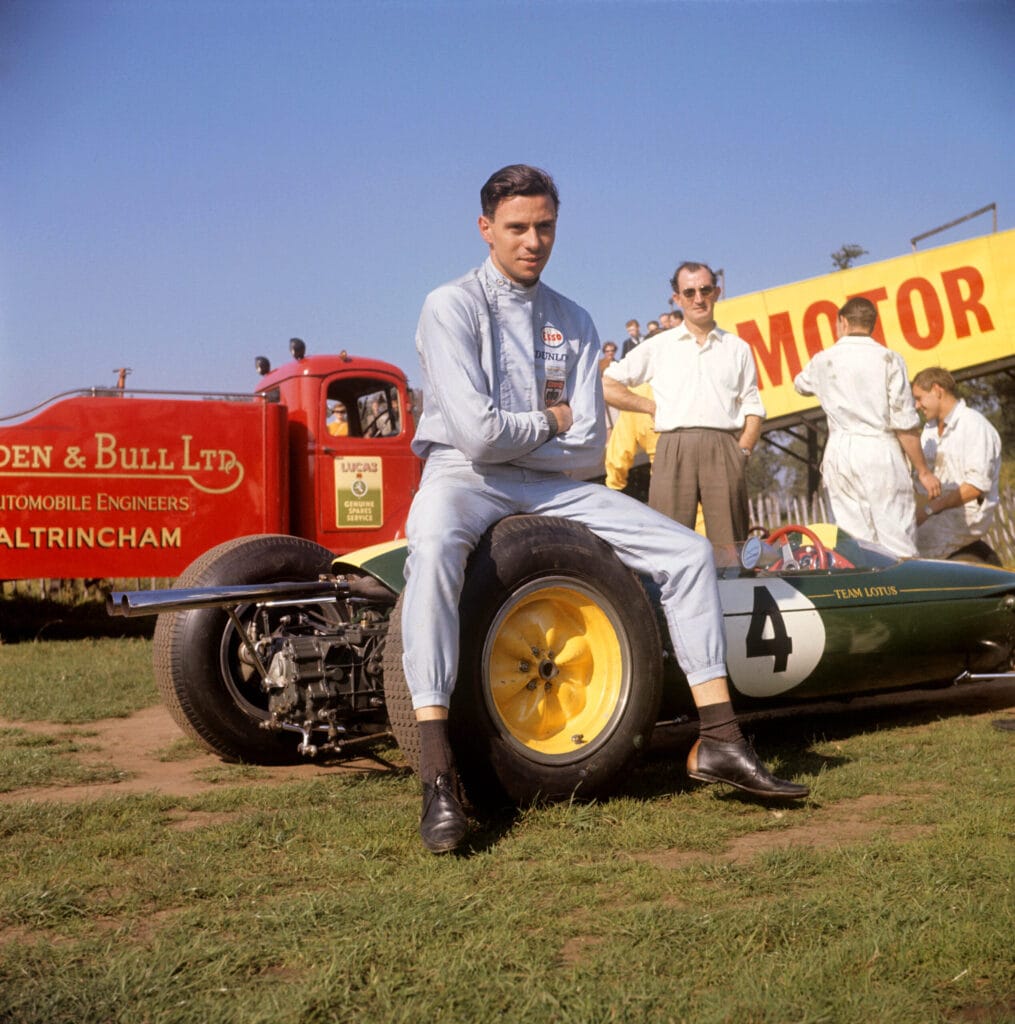In the tumultuous 1960s, British drivers seized control of Formula 1 with six world titles, shared among four drivers. These were tough men with diverse personalities, but they all shared one common trait: their boundless passion for motor racing. Today, we present a portrait of one such driver: Jim Clark.
In the 1960s, the British national anthem was increasingly heard at the conclusion of a Grand Prix. For a long time, Alfa, Ferrari, and Maserati had dominated Formula 1, but more and more British constructors began to build faster racing cars. Cooper, Aston Martin, BRM, Lotus. From Down Under, Brabham and McLaren joined the fray.
Ferrari derisively referred to them as ‘garagistes’, tinkerers who didn’t even build their own engines. Yet, he had to watch as they gradually took over, with British drivers at the helm. Six times in the Sixties, a British driver became the Formula 1 World Champion. But it was also a dangerous time…
Jim Clark: From Scottish Farmer to World Champion
Born in 1936, Jim Clark was fascinated by racing, but his parents and his faith held him back. However, friends recognized his talent, entered him into races, and eventually, he couldn’t resist the allure. Thus, he gradually entered the world of racing. Clark quickly emerged as the Max Verstappen of the 1960s, driving a Lotus.
Clark formed a particularly close relationship with Lotus team boss Colin Chapman. The uncertain and indecisive Clark left all career decisions to his astute team boss. Chapman even persuaded Clark’s parents when they were once again opposed. Once on the track, Clark’s hesitation disappeared, and he left everyone far behind. However, there was a downside: Chapman, with his innovative cars, was always two steps ahead, which meant they were not always reliable. Had Chapman introduced his innovations more evenly, Jim Clark would undoubtedly have been champion much more often.
The Lotus 25, which broke down too often in 1962, finally held up in 1963. Clark won seven out of ten races. Three times with a Grand Slam: pole position, fastest lap, and leading from start to finish. Clark was the undisputed virtuoso of his generation. Like no other, he was able to spare Chapman’s fragile machinery and also drive it fast. However, after a race weekend, he would return to his parents’ Scottish sheep farm as quickly as possible. He wanted nothing to do with the glamorous and vain world of racing.
After having trouble with the Lotus 33 a year earlier, Clark once again outperformed the entire competition in 1965. Six of the first seven races were won, three of them with a Grand Slam. Clark did not participate in the seventh race, in Monaco, because he was busy winning the 500 miles of Indianapolis. In the sixties, Formula 1 drivers raced somewhere every weekend. In addition to Formula 1, they drove Formula 2, touring cars, Sportscars, and so on. There were not as many Grands Prix, prize money and salaries were relatively low: money had to be made.
After the victory in Indianapolis, Chapman persuaded Ford to get involved in Formula 1. As soon as the Cosworth V8 was in the back of the Lotus in mid-1967, Clark seemed unstoppable. However, bad luck kept him from the title, which went to Denny Hulme in a Brabham. For 1968, Clark was the clear favorite. He won the opening race (on January 1st!) in South Africa. However, in April, he died in a crash during a Formula 2 race at Hockenheim. Even Clark, who had almost never had an accident, turned out not to be bulletproof.









